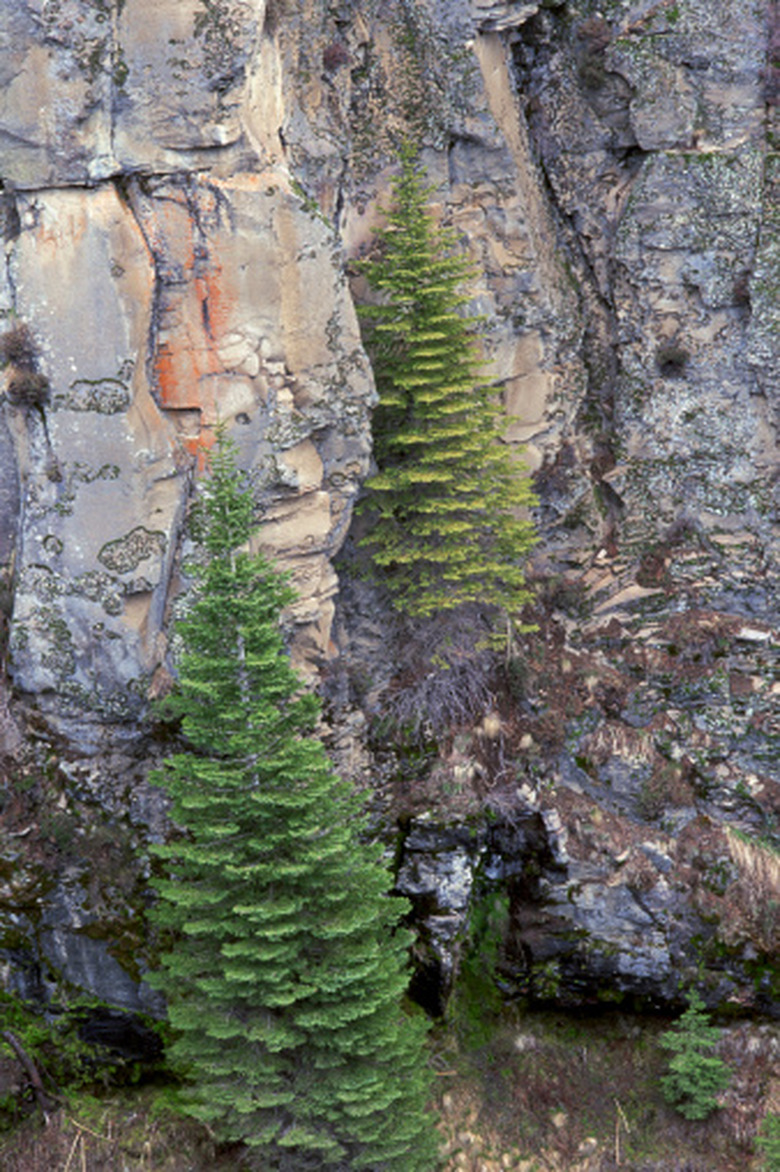Douglas Fir Vs. Balsam Fir
Douglas firs and balsam firs are both popular and important evergreen trees. Both are used as Christmas trees because of their short green needles and upward-pointing branches to hold ornaments. They may not look different to the untrained eye, but the trees have some significant physical differences and different uses by humans.
Physical Characteristics
Douglas firs usually grow taller than balsam firs. Balsam firs reach maximum heights of around 60 feet, while the tallest Douglas firs can grow up to 250 feet tall. Douglas firs are also not technically true firs because they do not drop their cones to spread seeds, like balsam and other firs do. Douglas firs can have more of a bluish-green coloring than balsam firs.
Growth
Balsam firs can live for up to 200 years, while Douglas firs can continue to increase in height for more than 200 years. Balsam fir trees often grow more shallow roots than Douglas firs, making them more likely to fall over in strong winds. Douglas firs have the ability to adapt to shallow soils like balsam firs.
Distribution
In North America, Douglas firs grow mostly in the Pacific Northwest, while balsam firs grow in southeastern Canada and the northeastern U.S. Balsam firs like relatively cool climates with lots of moisture, although cold winter temperatures can sometimes damage their roots. Douglas firs grow best in areas with wet but mild winters and mild, dry summers. They especially like areas with mild coastal weather patterns.
Common Uses
Both trees are popular Christmas trees. However, Christmas tree growers cannot usually farm Douglas firs outside their native habitats. Balsam fir is used in wreath-making. As wood, people often use the trees for different purposes. Douglas fir is an important timber tree throughout much of the world. People often use Douglas fir wood for timber building frames. Balsam fir, on the other hand, is a lighter wood more suitable for pulp and light construction projects.
